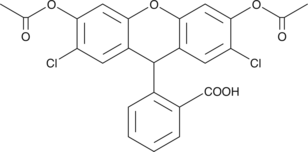Chemicals
Showing 4651–4800 of 41137 results
-
2,4-Dimethylthiazole-5-carboxylic acid is a highly functionalized and biased thiazole used for drug discovery. It is used as a heterocyclic building block to specifically modify lead compounds.
Brand:CaymanSKU:-2,4-Dimethylthiazole-5-carboxylic acid is a highly functionalized and biased thiazole used for drug discovery. It is used as a heterocyclic building block to specifically modify lead compounds.
Brand:CaymanSKU:-2,4-Dimethylthiazole-5-carboxylic acid is a highly functionalized and biased thiazole used for drug discovery. It is used as a heterocyclic building block to specifically modify lead compounds.
Brand:CaymanSKU:-2,4-DMA (hydrochloride) (Item No. 19746) is an analytical reference standard that is classified as an amphetamine. It is a serotonin 5-HT2 receptor agonist with an apparent pA2 value of 5.6.{31587} This product is intended for research and forensic applications.
Brand:CaymanSKU:19746 -Available on backorder
2,4-DMA (hydrochloride) (Item No. 19746) is an analytical reference standard that is classified as an amphetamine. It is a serotonin 5-HT2 receptor agonist with an apparent pA2 value of 5.6.{31587} This product is intended for research and forensic applications.
Brand:CaymanSKU:19746 -Available on backorder
The pro-angiogenic factor HIF-1α is targeted for destruction in normoxic environments by the hydroxylation of a specific proline residue, P564, by the oxygen-sensing enzyme HIF-α prolyl hydroxylase (HIF-PH).{8840} 2,4-DPD is a cell permeable, competitive inhibitor of HIF-PH. 2,4-DPD inhibits the hydroxylation of P564 by acting as a competitive inhibitor of the HIF-PH cofactor α-keto glutarate, with effective concentrations in the low µM range.{9005} 2,4-DPD is therefore expected to act as a pro-angiogenic compound, via the HIF-1α system.{9790,8799}
Brand:CaymanSKU:71200 - 10 mgAvailable on backorder
The pro-angiogenic factor HIF-1α is targeted for destruction in normoxic environments by the hydroxylation of a specific proline residue, P564, by the oxygen-sensing enzyme HIF-α prolyl hydroxylase (HIF-PH).{8840} 2,4-DPD is a cell permeable, competitive inhibitor of HIF-PH. 2,4-DPD inhibits the hydroxylation of P564 by acting as a competitive inhibitor of the HIF-PH cofactor α-keto glutarate, with effective concentrations in the low µM range.{9005} 2,4-DPD is therefore expected to act as a pro-angiogenic compound, via the HIF-1α system.{9790,8799}
Brand:CaymanSKU:71200 - 100 mgAvailable on backorder
The pro-angiogenic factor HIF-1α is targeted for destruction in normoxic environments by the hydroxylation of a specific proline residue, P564, by the oxygen-sensing enzyme HIF-α prolyl hydroxylase (HIF-PH).{8840} 2,4-DPD is a cell permeable, competitive inhibitor of HIF-PH. 2,4-DPD inhibits the hydroxylation of P564 by acting as a competitive inhibitor of the HIF-PH cofactor α-keto glutarate, with effective concentrations in the low µM range.{9005} 2,4-DPD is therefore expected to act as a pro-angiogenic compound, via the HIF-1α system.{9790,8799}
Brand:CaymanSKU:71200 - 25 mgAvailable on backorder
The pro-angiogenic factor HIF-1α is targeted for destruction in normoxic environments by the hydroxylation of a specific proline residue, P564, by the oxygen-sensing enzyme HIF-α prolyl hydroxylase (HIF-PH).{8840} 2,4-DPD is a cell permeable, competitive inhibitor of HIF-PH. 2,4-DPD inhibits the hydroxylation of P564 by acting as a competitive inhibitor of the HIF-PH cofactor α-keto glutarate, with effective concentrations in the low µM range.{9005} 2,4-DPD is therefore expected to act as a pro-angiogenic compound, via the HIF-1α system.{9790,8799}
Brand:CaymanSKU:71200 - 50 mgAvailable on backorder
2,4-Pyridinedicarboxylic Acid (2,4-PDCA) is a compound that structurally mimics 2-oxoglutarate (2-OG, also known as α-ketoglutarate) and chelates zinc, thus affecting a range of enzymes.{23685,23686} As a 2-OG mimic, it blocks the activity of 2-OG oxygenases, which include certain lysine demethylases and a variety of hydroxylases (e.g., prolyl, collagen, lysyl).{23686,23688} 2,4-PDCA inhibits several Jumonji domain-containing lysine demethylases when used at low micromolar concentrations.{23695,20945,23687} Through its effects on hydroxylases, including prolyl hydroxlase 1 (IC50 = 1.5 µM), 2,4-PDCA modulates hypoxia-inducible factor turnover, collagen synthesis, and plant cell wall formation.{23686,18511} It can inhibit zinc-dependent enzymes, like metallo-β-lactamase.{23684} 2,4-PDCA also affects and is translocated by organic anion transporters.{23689}
Brand:CaymanSKU:11138 - 1 gAvailable on backorder
2,4-Pyridinedicarboxylic Acid (2,4-PDCA) is a compound that structurally mimics 2-oxoglutarate (2-OG, also known as α-ketoglutarate) and chelates zinc, thus affecting a range of enzymes.{23685,23686} As a 2-OG mimic, it blocks the activity of 2-OG oxygenases, which include certain lysine demethylases and a variety of hydroxylases (e.g., prolyl, collagen, lysyl).{23686,23688} 2,4-PDCA inhibits several Jumonji domain-containing lysine demethylases when used at low micromolar concentrations.{23695,20945,23687} Through its effects on hydroxylases, including prolyl hydroxlase 1 (IC50 = 1.5 µM), 2,4-PDCA modulates hypoxia-inducible factor turnover, collagen synthesis, and plant cell wall formation.{23686,18511} It can inhibit zinc-dependent enzymes, like metallo-β-lactamase.{23684} 2,4-PDCA also affects and is translocated by organic anion transporters.{23689}
Brand:CaymanSKU:11138 - 5 gAvailable on backorder
2,5-Anhydro-D-mannitol is an antimetabolic fructose analogue that increases food intake in rats at doses of 50-800 mg/kg by inhibiting gluconeogenesis and glycogenolysis in the liver.{33711,33710}. It is phosphorylated in the liver, which decreases available ATP and signals eating behavior in rats through a vagal nerve mechanism.{33709,33712}
Brand:CaymanSKU:21673 -Out of stock
2,5-Anhydro-D-mannitol is an antimetabolic fructose analogue that increases food intake in rats at doses of 50-800 mg/kg by inhibiting gluconeogenesis and glycogenolysis in the liver.{33711,33710}. It is phosphorylated in the liver, which decreases available ATP and signals eating behavior in rats through a vagal nerve mechanism.{33709,33712}
Brand:CaymanSKU:21673 -Out of stock
2,5-Anhydro-D-mannitol is an antimetabolic fructose analogue that increases food intake in rats at doses of 50-800 mg/kg by inhibiting gluconeogenesis and glycogenolysis in the liver.{33711,33710}. It is phosphorylated in the liver, which decreases available ATP and signals eating behavior in rats through a vagal nerve mechanism.{33709,33712}
Brand:CaymanSKU:21673 -Out of stock
2,5-Anhydro-D-mannitol is an antimetabolic fructose analogue that increases food intake in rats at doses of 50-800 mg/kg by inhibiting gluconeogenesis and glycogenolysis in the liver.{33711,33710}. It is phosphorylated in the liver, which decreases available ATP and signals eating behavior in rats through a vagal nerve mechanism.{33709,33712}
Brand:CaymanSKU:21673 -Out of stock
2,5-Deoxyfructosazine is a pyrazine derivative that can be found in cured tobacco and is used as a flavoring agent in the food and tobacco industry.{30119,30120} Pyrazines, including 2,5-deoxyfructosazine, can be produced either by pyrolytic decomposition of natural compounds or by the reaction of sugars with alcoholic ammonia.{30120} 2,5-Deoxyfructosazine is also formed by the breakdown of D-glucosamine at neutral pH.{30123,30121} Like glucosamine, 2,5-deoxyfructosazine has DNA strand breakage activity and strongly inhibits IL-2 production by Jurkat cells stimulated with phytohemagglutinin (IC50 = ~1.25 mM).{30122,30121,30123}
Brand:CaymanSKU:-Available on backorder
2,5-Deoxyfructosazine is a pyrazine derivative that can be found in cured tobacco and is used as a flavoring agent in the food and tobacco industry.{30119,30120} Pyrazines, including 2,5-deoxyfructosazine, can be produced either by pyrolytic decomposition of natural compounds or by the reaction of sugars with alcoholic ammonia.{30120} 2,5-Deoxyfructosazine is also formed by the breakdown of D-glucosamine at neutral pH.{30123,30121} Like glucosamine, 2,5-deoxyfructosazine has DNA strand breakage activity and strongly inhibits IL-2 production by Jurkat cells stimulated with phytohemagglutinin (IC50 = ~1.25 mM).{30122,30121,30123}
Brand:CaymanSKU:-Available on backorder
2,5-Deoxyfructosazine is a pyrazine derivative that can be found in cured tobacco and is used as a flavoring agent in the food and tobacco industry.{30119,30120} Pyrazines, including 2,5-deoxyfructosazine, can be produced either by pyrolytic decomposition of natural compounds or by the reaction of sugars with alcoholic ammonia.{30120} 2,5-Deoxyfructosazine is also formed by the breakdown of D-glucosamine at neutral pH.{30123,30121} Like glucosamine, 2,5-deoxyfructosazine has DNA strand breakage activity and strongly inhibits IL-2 production by Jurkat cells stimulated with phytohemagglutinin (IC50 = ~1.25 mM).{30122,30121,30123}
Brand:CaymanSKU:-Available on backorder
2,5-Dihydroxybenzaldehyde is a building block.{46911,46912} It has been used in the synthesis of 2,4-dimethylbenzoylhydrazones with antileishmanial and antioxidant activity.
Brand:CaymanSKU:30268 - 10 gAvailable on backorder
2,5-Dihydroxybenzaldehyde is a building block.{46911,46912} It has been used in the synthesis of 2,4-dimethylbenzoylhydrazones with antileishmanial and antioxidant activity.
Brand:CaymanSKU:30268 - 25 gAvailable on backorder
2,5-Dihydroxybenzaldehyde is a building block.{46911,46912} It has been used in the synthesis of 2,4-dimethylbenzoylhydrazones with antileishmanial and antioxidant activity.
Brand:CaymanSKU:30268 - 5 gAvailable on backorder
2,5-Dihydroxybenzaldehyde is a building block.{46911,46912} It has been used in the synthesis of 2,4-dimethylbenzoylhydrazones with antileishmanial and antioxidant activity.
Brand:CaymanSKU:30268 - 50 gAvailable on backorder
2,5-Dihydroxycinnamic acid phenethyl ester is an inhibitor of 5-lipoxygenase (5-LO) with an IC50 value of 0.33 µM for inhibition of 5-LO product synthesis in polymorphonuclear leukocytes (PMNLs) stimulated with the sarcoendoplasmic reticulum calcium ATPase (SERCA) inhibitor thapsigargin (Item No. 10522).{50734} It scavenges 2,2-diphenyl-1-picrylhydrazyl (DPPH) radicals (IC50 = 16.41 µM) in a cell-free assay. 2,5-Dihydroxycinnamic acid phenethyl ester selectively decreases viability of RCC4 and 786-O cells lacking the Von Hippel-Lindau (VHL) tumor suppressor gene (IC50s = 8 and 34.8 µM, respectively) over cells homozygously expressing VHL (IC50s = 99.6 and >100 µM, respectively). However, it also decreases viability of RCC10 VHL-/- and RCC10 VHL+/+ cells (IC50s = 5.04 and 0.96 µM, respectively). It increases the levels of pro-caspase-3a, LC3B-I, and LC3B-II in RCC4 VHL-/- cells in a concentration-dependent manner.
Brand:CaymanSKU:29736 - 1 mgAvailable on backorder
2,5-Dihydroxycinnamic acid phenethyl ester is an inhibitor of 5-lipoxygenase (5-LO) with an IC50 value of 0.33 µM for inhibition of 5-LO product synthesis in polymorphonuclear leukocytes (PMNLs) stimulated with the sarcoendoplasmic reticulum calcium ATPase (SERCA) inhibitor thapsigargin (Item No. 10522).{50734} It scavenges 2,2-diphenyl-1-picrylhydrazyl (DPPH) radicals (IC50 = 16.41 µM) in a cell-free assay. 2,5-Dihydroxycinnamic acid phenethyl ester selectively decreases viability of RCC4 and 786-O cells lacking the Von Hippel-Lindau (VHL) tumor suppressor gene (IC50s = 8 and 34.8 µM, respectively) over cells homozygously expressing VHL (IC50s = 99.6 and >100 µM, respectively). However, it also decreases viability of RCC10 VHL-/- and RCC10 VHL+/+ cells (IC50s = 5.04 and 0.96 µM, respectively). It increases the levels of pro-caspase-3a, LC3B-I, and LC3B-II in RCC4 VHL-/- cells in a concentration-dependent manner.
Brand:CaymanSKU:29736 - 10 mgAvailable on backorder
2,5-Dihydroxycinnamic acid phenethyl ester is an inhibitor of 5-lipoxygenase (5-LO) with an IC50 value of 0.33 µM for inhibition of 5-LO product synthesis in polymorphonuclear leukocytes (PMNLs) stimulated with the sarcoendoplasmic reticulum calcium ATPase (SERCA) inhibitor thapsigargin (Item No. 10522).{50734} It scavenges 2,2-diphenyl-1-picrylhydrazyl (DPPH) radicals (IC50 = 16.41 µM) in a cell-free assay. 2,5-Dihydroxycinnamic acid phenethyl ester selectively decreases viability of RCC4 and 786-O cells lacking the Von Hippel-Lindau (VHL) tumor suppressor gene (IC50s = 8 and 34.8 µM, respectively) over cells homozygously expressing VHL (IC50s = 99.6 and >100 µM, respectively). However, it also decreases viability of RCC10 VHL-/- and RCC10 VHL+/+ cells (IC50s = 5.04 and 0.96 µM, respectively). It increases the levels of pro-caspase-3a, LC3B-I, and LC3B-II in RCC4 VHL-/- cells in a concentration-dependent manner.
Brand:CaymanSKU:29736 - 25 mgAvailable on backorder
2,5-Dihydroxycinnamic acid phenethyl ester is an inhibitor of 5-lipoxygenase (5-LO) with an IC50 value of 0.33 µM for inhibition of 5-LO product synthesis in polymorphonuclear leukocytes (PMNLs) stimulated with the sarcoendoplasmic reticulum calcium ATPase (SERCA) inhibitor thapsigargin (Item No. 10522).{50734} It scavenges 2,2-diphenyl-1-picrylhydrazyl (DPPH) radicals (IC50 = 16.41 µM) in a cell-free assay. 2,5-Dihydroxycinnamic acid phenethyl ester selectively decreases viability of RCC4 and 786-O cells lacking the Von Hippel-Lindau (VHL) tumor suppressor gene (IC50s = 8 and 34.8 µM, respectively) over cells homozygously expressing VHL (IC50s = 99.6 and >100 µM, respectively). However, it also decreases viability of RCC10 VHL-/- and RCC10 VHL+/+ cells (IC50s = 5.04 and 0.96 µM, respectively). It increases the levels of pro-caspase-3a, LC3B-I, and LC3B-II in RCC4 VHL-/- cells in a concentration-dependent manner.
Brand:CaymanSKU:29736 - 5 mgAvailable on backorder
2,5-Dimethoxyamphetamine (2,5-DMA) is one of many amphetamines which have appeared on the illicit drug market.{20771} Like 2,4,5-trimethoxyamphetamine and related compounds, 2,5-DMA is a serotonin 5-HT2 receptor agonist and has psychoactive properties.{20771} This product is intended for research and forensic applications.
Brand:CaymanSKU:-2,5-dimethyl Celecoxib is a derivative of celecoxib (Item No. 10008672) that does not inhibit COX-2 (IC50 = >100 µM).{45305} It does inhibit microsomal prostaglandin E synthase-1 (mPGES-1) in HeLa cells (IC50 = 15.6 µM) and reduces prostaglandin E2 (PGE2; Item No. 14010) production in HeLa, A549, and HCA-7 cells (IC50s = 0.64, 0.83, and 3.08 µM, respectively).{45306} It inhibits proliferation of drug-sensitive RPMI8226 and multidrug-resistant 8226/Dox40 multiple myeloma cells, as well as increases the rate of apoptosis when used at concentrations of 20 and 30 µM.{45307} 2,5-dimethyl Celecoxib reduces the expression of survivin, cyclin A, cyclin B, MEK1, and MEK2 in 8226/Dox40 cells. The antiproliferative effect of 2,5-dimethyl celecoxib is independent of mPGES-1 inhibition.{45306}
Brand:CaymanSKU:10008006 - 10 mgAvailable on backorder
2,5-dimethyl Celecoxib is a derivative of celecoxib (Item No. 10008672) that does not inhibit COX-2 (IC50 = >100 µM).{45305} It does inhibit microsomal prostaglandin E synthase-1 (mPGES-1) in HeLa cells (IC50 = 15.6 µM) and reduces prostaglandin E2 (PGE2; Item No. 14010) production in HeLa, A549, and HCA-7 cells (IC50s = 0.64, 0.83, and 3.08 µM, respectively).{45306} It inhibits proliferation of drug-sensitive RPMI8226 and multidrug-resistant 8226/Dox40 multiple myeloma cells, as well as increases the rate of apoptosis when used at concentrations of 20 and 30 µM.{45307} 2,5-dimethyl Celecoxib reduces the expression of survivin, cyclin A, cyclin B, MEK1, and MEK2 in 8226/Dox40 cells. The antiproliferative effect of 2,5-dimethyl celecoxib is independent of mPGES-1 inhibition.{45306}
Brand:CaymanSKU:10008006 - 25 mgAvailable on backorder
2,5-dimethyl Celecoxib is a derivative of celecoxib (Item No. 10008672) that does not inhibit COX-2 (IC50 = >100 µM).{45305} It does inhibit microsomal prostaglandin E synthase-1 (mPGES-1) in HeLa cells (IC50 = 15.6 µM) and reduces prostaglandin E2 (PGE2; Item No. 14010) production in HeLa, A549, and HCA-7 cells (IC50s = 0.64, 0.83, and 3.08 µM, respectively).{45306} It inhibits proliferation of drug-sensitive RPMI8226 and multidrug-resistant 8226/Dox40 multiple myeloma cells, as well as increases the rate of apoptosis when used at concentrations of 20 and 30 µM.{45307} 2,5-dimethyl Celecoxib reduces the expression of survivin, cyclin A, cyclin B, MEK1, and MEK2 in 8226/Dox40 cells. The antiproliferative effect of 2,5-dimethyl celecoxib is independent of mPGES-1 inhibition.{45306}
Brand:CaymanSKU:10008006 - 5 mgAvailable on backorder
2,5-DMMA is a designer drug that combines the 2,5 disubstitution pattern of 2,5-dimethoxyphenethylamines with the backbone of methamphetamine. While the physiological and toxicological properties of this compound are poorly studied, the absence of an additional third substitution at either the three or four position on similar phenethylamines and amphetamines typically reduces effects on monoamine action.{22700,20772} This product is intended for forensic and research applications.
Brand:CaymanSKU:-2,5-DMMA is a designer drug that combines the 2,5 disubstitution pattern of 2,5-dimethoxyphenethylamines with the backbone of methamphetamine. While the physiological and toxicological properties of this compound are poorly studied, the absence of an additional third substitution at either the three or four position on similar phenethylamines and amphetamines typically reduces effects on monoamine action.{22700,20772} This product is intended for forensic and research applications.
Brand:CaymanSKU:-2,5-DMMA is a designer drug that combines the 2,5 disubstitution pattern of 2,5-dimethoxyphenethylamines with the backbone of methamphetamine. While the physiological and toxicological properties of this compound are poorly studied, the absence of an additional third substitution at either the three or four position on similar phenethylamines and amphetamines typically reduces effects on monoamine action.{22700,20772} This product is intended for forensic and research applications.
Brand:CaymanSKU:-2,6-Dibromoquinone-4-chloroimide is a colorimetric dye for the detection of phenolic compounds.{42551} It produces an indigo dye upon reacting with phenolic compounds at a pH of approximately 9.4. 2,6-Dibromoquinone-4-chloroimide has been used as a Gibbs reagent for the colorimetric detection of phenolic compounds. It has also been used in chromogenic reactions for the quantitative colorimetric detection of aflatoxins, causing colorless aflatoxins to become green with an absorption band at 673 nm.{42552}
Brand:CaymanSKU:21056 -Out of stock
2,6-Dibromoquinone-4-chloroimide is a colorimetric dye for the detection of phenolic compounds.{42551} It produces an indigo dye upon reacting with phenolic compounds at a pH of approximately 9.4. 2,6-Dibromoquinone-4-chloroimide has been used as a Gibbs reagent for the colorimetric detection of phenolic compounds. It has also been used in chromogenic reactions for the quantitative colorimetric detection of aflatoxins, causing colorless aflatoxins to become green with an absorption band at 673 nm.{42552}
Brand:CaymanSKU:21056 -Out of stock
2,6-Dibromoquinone-4-chloroimide is a colorimetric dye for the detection of phenolic compounds.{42551} It produces an indigo dye upon reacting with phenolic compounds at a pH of approximately 9.4. 2,6-Dibromoquinone-4-chloroimide has been used as a Gibbs reagent for the colorimetric detection of phenolic compounds. It has also been used in chromogenic reactions for the quantitative colorimetric detection of aflatoxins, causing colorless aflatoxins to become green with an absorption band at 673 nm.{42552}
Brand:CaymanSKU:21056 -Out of stock
2,6-Dichloropurine-9-β-D-riboside is a building block.{52788,52789} It has been used in the synthesis of photoaffinity probes for nucleotide binding sites in proteins.
Brand:CaymanSKU:31405 - 100 mgAvailable on backorder
2,6-Dichloropurine-9-β-D-riboside is a building block.{52788,52789} It has been used in the synthesis of photoaffinity probes for nucleotide binding sites in proteins.
Brand:CaymanSKU:31405 - 25 mgAvailable on backorder
2,6-Dichloropurine-9-β-D-riboside is a building block.{52788,52789} It has been used in the synthesis of photoaffinity probes for nucleotide binding sites in proteins.
Brand:CaymanSKU:31405 - 50 mgAvailable on backorder
2,6-Dichloropurine-9-β-D-riboside is a building block.{52788,52789} It has been used in the synthesis of photoaffinity probes for nucleotide binding sites in proteins.
Brand:CaymanSKU:31405 - 500 mgAvailable on backorder
DCFH (commonly known as dichlorofluorescin) is used as an indicator of peroxynitrite formation.{6533,5356} DCFH is supplied as the diacetate ester. Following enzymatic or base-catalyzed cleavage of the diacetate groups, it is readily oxidized to the highly fluorescent product dichlorofluorescein (DHF). Peroxynitrite is an efficient mediator of this oxidation and neither NO, superoxide, nor hydrogen peroxide alone appear to oxidize DCFH. Formation of DHF can be monitored by fluorescence spectroscopy using excitation and emission wavelengths of 502 and 523 nm, respectively, or by absorbance spectroscopy at 500 nm (ɛ = 59,500 M−1cm−1).{6533,5356}
Brand:CaymanSKU:85155 - 100 mgAvailable on backorder
DCFH (commonly known as dichlorofluorescin) is used as an indicator of peroxynitrite formation.{6533,5356} DCFH is supplied as the diacetate ester. Following enzymatic or base-catalyzed cleavage of the diacetate groups, it is readily oxidized to the highly fluorescent product dichlorofluorescein (DHF). Peroxynitrite is an efficient mediator of this oxidation and neither NO, superoxide, nor hydrogen peroxide alone appear to oxidize DCFH. Formation of DHF can be monitored by fluorescence spectroscopy using excitation and emission wavelengths of 502 and 523 nm, respectively, or by absorbance spectroscopy at 500 nm (ɛ = 59,500 M−1cm−1).{6533,5356}
Brand:CaymanSKU:85155 - 250 mgAvailable on backorder
DCFH (commonly known as dichlorofluorescin) is used as an indicator of peroxynitrite formation.{6533,5356} DCFH is supplied as the diacetate ester. Following enzymatic or base-catalyzed cleavage of the diacetate groups, it is readily oxidized to the highly fluorescent product dichlorofluorescein (DHF). Peroxynitrite is an efficient mediator of this oxidation and neither NO, superoxide, nor hydrogen peroxide alone appear to oxidize DCFH. Formation of DHF can be monitored by fluorescence spectroscopy using excitation and emission wavelengths of 502 and 523 nm, respectively, or by absorbance spectroscopy at 500 nm (ɛ = 59,500 M−1cm−1).{6533,5356}
Brand:CaymanSKU:85155 - 50 mgAvailable on backorder
DCFH (commonly known as dichlorofluorescin) is used as an indicator of peroxynitrite formation.{6533,5356} DCFH is supplied as the diacetate ester. Following enzymatic or base-catalyzed cleavage of the diacetate groups, it is readily oxidized to the highly fluorescent product dichlorofluorescein (DHF). Peroxynitrite is an efficient mediator of this oxidation and neither NO, superoxide, nor hydrogen peroxide alone appear to oxidize DCFH. Formation of DHF can be monitored by fluorescence spectroscopy using excitation and emission wavelengths of 502 and 523 nm, respectively, or by absorbance spectroscopy at 500 nm (ɛ = 59,500 M−1cm−1).{6533,5356}
Brand:CaymanSKU:85155 - 500 mgAvailable on backorder
2,7-Dimethoxy-6-(1-acetoxyethyl)juglone is a naphthoquinone derivative originally isolated from the fungus H. toruloidea.{48174}
Brand:CaymanSKU:27267 - 1 mgAvailable on backorder
2,7-Dimethoxy-6-(1-acetoxyethyl)juglone is a naphthoquinone derivative originally isolated from the fungus H. toruloidea.{48174}
Brand:CaymanSKU:27267 - 500 µgAvailable on backorder
2’-C-Methyladenosine is an inhibitor of hepatitis C virus (HCV) replication (IC50 = 0.3 µM in Huh-7 human hepatoma cells) that is not cytotoxic at concentrations up to 100 µM.{39652} It is converted intracellularly to adenosine triphosphate, which inhibits the RNA-dependent RNA polymerase nonstructural protein 5B (NS5B). It also inhibits growth of L. guyanensis in vitro (EC50 = 3 µM) and eradicates it when used at a concentration of 10 µM.{39653}
Brand:CaymanSKU:23062 - 100 mgAvailable on backorder
2’-C-Methyladenosine is an inhibitor of hepatitis C virus (HCV) replication (IC50 = 0.3 µM in Huh-7 human hepatoma cells) that is not cytotoxic at concentrations up to 100 µM.{39652} It is converted intracellularly to adenosine triphosphate, which inhibits the RNA-dependent RNA polymerase nonstructural protein 5B (NS5B). It also inhibits growth of L. guyanensis in vitro (EC50 = 3 µM) and eradicates it when used at a concentration of 10 µM.{39653}
Brand:CaymanSKU:23062 - 50 mgAvailable on backorder
2′-C-Methylcytidine (2CMC) is a ribonucleoside with broad-spectrum antiviral activity.{37119} It reduces the number of viral plaques in BHK-21 cells infected with dengue type 2, reovirus type 1, West Nile, and yellow fever RNA viruses with EC50 values of 95, 26, 80, and 75 μM, respectively. 2CMC inhibits hepatitis C virus (HCV) replication (EC50 = 2.2 μM in a replicon assay) and protects MDBK cells from infection with bovine virus diarrhea virus (BVDV; EC50 = 2.2 μM) and human coronavirus (HCoV; EC50 = 90 μM). It also reduces infectious virus yield in BHK-21 cells infected with foot-and-mouth disease virus (FMDV; EC50 = 6.4 μM) and swine vesicular disease virus (SVDV; EC50 = 45.2 μM).{37120} In vivo, 2CMC reduces viral shedding to undetectable levels in a mouse model of persistent norovirus infection.{37121}
Brand:CaymanSKU:22887 - 10 mgAvailable on backorder
2′-C-Methylcytidine (2CMC) is a ribonucleoside with broad-spectrum antiviral activity.{37119} It reduces the number of viral plaques in BHK-21 cells infected with dengue type 2, reovirus type 1, West Nile, and yellow fever RNA viruses with EC50 values of 95, 26, 80, and 75 μM, respectively. 2CMC inhibits hepatitis C virus (HCV) replication (EC50 = 2.2 μM in a replicon assay) and protects MDBK cells from infection with bovine virus diarrhea virus (BVDV; EC50 = 2.2 μM) and human coronavirus (HCoV; EC50 = 90 μM). It also reduces infectious virus yield in BHK-21 cells infected with foot-and-mouth disease virus (FMDV; EC50 = 6.4 μM) and swine vesicular disease virus (SVDV; EC50 = 45.2 μM).{37120} In vivo, 2CMC reduces viral shedding to undetectable levels in a mouse model of persistent norovirus infection.{37121}
Brand:CaymanSKU:22887 - 25 mgAvailable on backorder
2′-C-Methylcytidine (2CMC) is a ribonucleoside with broad-spectrum antiviral activity.{37119} It reduces the number of viral plaques in BHK-21 cells infected with dengue type 2, reovirus type 1, West Nile, and yellow fever RNA viruses with EC50 values of 95, 26, 80, and 75 μM, respectively. 2CMC inhibits hepatitis C virus (HCV) replication (EC50 = 2.2 μM in a replicon assay) and protects MDBK cells from infection with bovine virus diarrhea virus (BVDV; EC50 = 2.2 μM) and human coronavirus (HCoV; EC50 = 90 μM). It also reduces infectious virus yield in BHK-21 cells infected with foot-and-mouth disease virus (FMDV; EC50 = 6.4 μM) and swine vesicular disease virus (SVDV; EC50 = 45.2 μM).{37120} In vivo, 2CMC reduces viral shedding to undetectable levels in a mouse model of persistent norovirus infection.{37121}
Brand:CaymanSKU:22887 - 5 mgAvailable on backorder
2’-Deoxyadenosine-5′-monophosphate is a derivative of the nucleic acid, AMP, in which the hydroxyl group on the 2′ carbon of the pentose has been reduced to a hydrogen atom. It has been used in the synthesis of novel photoaffinity labels for incorporation into DNA and to study adenosine-based interactions during DNA synthesis and DNA damage.{26544,26542,26543}
Brand:CaymanSKU:-2’-Deoxyadenosine-5′-monophosphate is a derivative of the nucleic acid, AMP, in which the hydroxyl group on the 2′ carbon of the pentose has been reduced to a hydrogen atom. It has been used in the synthesis of novel photoaffinity labels for incorporation into DNA and to study adenosine-based interactions during DNA synthesis and DNA damage.{26544,26542,26543}
Brand:CaymanSKU:-2’-Deoxyadenosine-5′-monophosphate is a derivative of the nucleic acid, AMP, in which the hydroxyl group on the 2′ carbon of the pentose has been reduced to a hydrogen atom. It has been used in the synthesis of novel photoaffinity labels for incorporation into DNA and to study adenosine-based interactions during DNA synthesis and DNA damage.{26544,26542,26543}
Brand:CaymanSKU:-2’-Deoxycytidine is a deoxyribonucleoside comprised of a deoxyribose sugar and a cytosine base.{48688} It is phosphorylated by deoxycytidine kinase in the cytosol or thymidine kinase 2 (TK2) in mitochondria to form deoxycytidine monophosphate (dCMP; Item No. 29340).{48673,48672} Oral administration of 2’-deoxycytidine in combination with deoxythymidine delays disease onset and increases lifespan in a Tk2 H126N knock-in (Tk2-/-) mouse model of TK2 deficiency.{48673}
Brand:CaymanSKU:30125 - 1 gAvailable on backorder
2’-Deoxycytidine is a deoxyribonucleoside comprised of a deoxyribose sugar and a cytosine base.{48688} It is phosphorylated by deoxycytidine kinase in the cytosol or thymidine kinase 2 (TK2) in mitochondria to form deoxycytidine monophosphate (dCMP; Item No. 29340).{48673,48672} Oral administration of 2’-deoxycytidine in combination with deoxythymidine delays disease onset and increases lifespan in a Tk2 H126N knock-in (Tk2-/-) mouse model of TK2 deficiency.{48673}
Brand:CaymanSKU:30125 - 5 gAvailable on backorder
2’-Deoxycytidine 5’-diphosphate (dCDP) is a nucleotide diphosphate used in various biochemical research applications including studies of DNA synthesis.{38216,38217,38218} It is a substrate for various nucleoside diphosphate kinases to synthesize dCTP.{38215}
Brand:CaymanSKU:22982 - 10 mgAvailable on backorder
2’-Deoxycytidine 5’-diphosphate (dCDP) is a nucleotide diphosphate used in various biochemical research applications including studies of DNA synthesis.{38216,38217,38218} It is a substrate for various nucleoside diphosphate kinases to synthesize dCTP.{38215}
Brand:CaymanSKU:22982 - 25 mgAvailable on backorder
2’-Deoxycytidine 5’-diphosphate (dCDP) is a nucleotide diphosphate used in various biochemical research applications including studies of DNA synthesis.{38216,38217,38218} It is a substrate for various nucleoside diphosphate kinases to synthesize dCTP.{38215}
Brand:CaymanSKU:22982 - 5 mgAvailable on backorder
2’-Deoxycytidine 5’-diphosphate (dCDP) is a nucleotide diphosphate used in various biochemical research applications including studies of DNA synthesis.{38216,38217,38218} It is a substrate for various nucleoside diphosphate kinases to synthesize dCTP.{38215}
Brand:CaymanSKU:22982 - 50 mgAvailable on backorder
2’-Deoxycytidine-5’-monophosphate (dCMP) is a deoxyribonucleotide.{48688} It is formed via phosphorylation of deoxycytidine by deoxycytidine kinase in the cytosol or thymidine kinase 2 (TK2) in mitochondria.{48672,48673} It is further phosphorylated by UMP-CMP kinase to form dCDP (Item No. 22982) during nucleic acid synthesis.{48674} dCMP (700 mg/kg) decreases hydroxyurea-induced neuroepithelial cell necrosis in embryonic mouse spinal cord when administered to pregnant dams.{48675} Oral administration of dCMP in combination with dTMP increases lifespan in Tk2 H126N knock-in (Tk2-/-) mouse model of TK2 deficiency.{48673}
Brand:CaymanSKU:29340 - 1 gAvailable on backorder
2’-Deoxycytidine-5’-monophosphate (dCMP) is a deoxyribonucleotide.{48688} It is formed via phosphorylation of deoxycytidine by deoxycytidine kinase in the cytosol or thymidine kinase 2 (TK2) in mitochondria.{48672,48673} It is further phosphorylated by UMP-CMP kinase to form dCDP (Item No. 22982) during nucleic acid synthesis.{48674} dCMP (700 mg/kg) decreases hydroxyurea-induced neuroepithelial cell necrosis in embryonic mouse spinal cord when administered to pregnant dams.{48675} Oral administration of dCMP in combination with dTMP increases lifespan in Tk2 H126N knock-in (Tk2-/-) mouse model of TK2 deficiency.{48673}
Brand:CaymanSKU:29340 - 250 mgAvailable on backorder
2’-Deoxycytidine-5’-monophosphate (dCMP) is a deoxyribonucleotide.{48688} It is formed via phosphorylation of deoxycytidine by deoxycytidine kinase in the cytosol or thymidine kinase 2 (TK2) in mitochondria.{48672,48673} It is further phosphorylated by UMP-CMP kinase to form dCDP (Item No. 22982) during nucleic acid synthesis.{48674} dCMP (700 mg/kg) decreases hydroxyurea-induced neuroepithelial cell necrosis in embryonic mouse spinal cord when administered to pregnant dams.{48675} Oral administration of dCMP in combination with dTMP increases lifespan in Tk2 H126N knock-in (Tk2-/-) mouse model of TK2 deficiency.{48673}
Brand:CaymanSKU:29340 - 5 gAvailable on backorder
2’-Deoxycytidine-5’-monophosphate (dCMP) is a deoxyribonucleotide.{48688} It is formed via phosphorylation of deoxycytidine by deoxycytidine kinase in the cytosol or thymidine kinase 2 (TK2) in mitochondria.{48672,48673} It is further phosphorylated by UMP-CMP kinase to form dCDP (Item No. 22982) during nucleic acid synthesis.{48674} dCMP (700 mg/kg) decreases hydroxyurea-induced neuroepithelial cell necrosis in embryonic mouse spinal cord when administered to pregnant dams.{48675} Oral administration of dCMP in combination with dTMP increases lifespan in Tk2 H126N knock-in (Tk2-/-) mouse model of TK2 deficiency.{48673}
Brand:CaymanSKU:29340 - 500 mgAvailable on backorder
2′-Deoxyguanosine is a purine nucleoside with diverse biological activities.{53664,53663,53662,53665} It inhibits the clonogenic growth of HL-60 and K562 leukemia cells (IC50s = 80 and 100 µM, respectively).{53664} 2′-Deoxyguanosine inhibits the growth of MOLT-4 T cells and MGL-8 B cells by 99.8 and 68.3%, respectively, when used at a concentration of 50 µM.{53663} It increases the number of binucleated cells, a marker of inhibited cytokinesis, in A. sativum meristems.{53662} 2′-Deoxyguanosine (>1 µM) also induces relaxation of precontracted isolated bovine lingual artery.{53665}
Brand:CaymanSKU:9002864 - 1 gAvailable on backorder
2′-Deoxyguanosine is a purine nucleoside with diverse biological activities.{53664,53663,53662,53665} It inhibits the clonogenic growth of HL-60 and K562 leukemia cells (IC50s = 80 and 100 µM, respectively).{53664} 2′-Deoxyguanosine inhibits the growth of MOLT-4 T cells and MGL-8 B cells by 99.8 and 68.3%, respectively, when used at a concentration of 50 µM.{53663} It increases the number of binucleated cells, a marker of inhibited cytokinesis, in A. sativum meristems.{53662} 2′-Deoxyguanosine (>1 µM) also induces relaxation of precontracted isolated bovine lingual artery.{53665}
Brand:CaymanSKU:9002864 - 10 gAvailable on backorder
2′-Deoxyguanosine is a purine nucleoside with diverse biological activities.{53664,53663,53662,53665} It inhibits the clonogenic growth of HL-60 and K562 leukemia cells (IC50s = 80 and 100 µM, respectively).{53664} 2′-Deoxyguanosine inhibits the growth of MOLT-4 T cells and MGL-8 B cells by 99.8 and 68.3%, respectively, when used at a concentration of 50 µM.{53663} It increases the number of binucleated cells, a marker of inhibited cytokinesis, in A. sativum meristems.{53662} 2′-Deoxyguanosine (>1 µM) also induces relaxation of precontracted isolated bovine lingual artery.{53665}
Brand:CaymanSKU:9002864 - 5 gAvailable on backorder
2′-Deoxyguanosine 5′-monophosphate (dGMP) is used as a substrate of guanylate kinases to generate dGDP, which in turn is phosphorylated to dGTP, a nucleotide precursor used in DNA synthesis. In addition, dGMP can be efficiently phosphorylated by the type I thymidylate kinase of the malarial agent P. falciparum.{26880,26883} In humans, deficiency of mitochondrial deoxyguanosine kinase, which synthesizes dGMP from ATP and deoxyguanosine, contributes to mitochondrial DNA depletion syndrome.{26882,26881}
Brand:CaymanSKU:-Out of stock
2′-Deoxyguanosine 5′-monophosphate (dGMP) is used as a substrate of guanylate kinases to generate dGDP, which in turn is phosphorylated to dGTP, a nucleotide precursor used in DNA synthesis. In addition, dGMP can be efficiently phosphorylated by the type I thymidylate kinase of the malarial agent P. falciparum.{26880,26883} In humans, deficiency of mitochondrial deoxyguanosine kinase, which synthesizes dGMP from ATP and deoxyguanosine, contributes to mitochondrial DNA depletion syndrome.{26882,26881}
Brand:CaymanSKU:-Out of stock
2′-Deoxyguanosine 5′-monophosphate (dGMP) is used as a substrate of guanylate kinases to generate dGDP, which in turn is phosphorylated to dGTP, a nucleotide precursor used in DNA synthesis. In addition, dGMP can be efficiently phosphorylated by the type I thymidylate kinase of the malarial agent P. falciparum.{26880,26883} In humans, deficiency of mitochondrial deoxyguanosine kinase, which synthesizes dGMP from ATP and deoxyguanosine, contributes to mitochondrial DNA depletion syndrome.{26882,26881}
Brand:CaymanSKU:-Out of stock
2’-Deoxyinosine is the nucleoside form of hypoxanthine (Item No. 22254).{59200} It is a product of DNA damage that is formed from 2’-deoxyadenosine (Item No. 27315) by adenosine deaminase or reactive nitrogen species (RNS).{59200,59201} 2’-deoxyinosine (1 mM) enhances apoptosis induced by 5-fluorouracil (5-FU; Item No. 14416) in HT-29 and SW620 cancer cells.{59202} It also enhances 5-FU-induced tumor growth suppression in an SW620 mouse xenograft model when administered at a dose of 1.6 g/kg twice per day.
Brand:CaymanSKU:31507 - 1 gAvailable on backorder
2’-Deoxyinosine is the nucleoside form of hypoxanthine (Item No. 22254).{59200} It is a product of DNA damage that is formed from 2’-deoxyadenosine (Item No. 27315) by adenosine deaminase or reactive nitrogen species (RNS).{59200,59201} 2’-deoxyinosine (1 mM) enhances apoptosis induced by 5-fluorouracil (5-FU; Item No. 14416) in HT-29 and SW620 cancer cells.{59202} It also enhances 5-FU-induced tumor growth suppression in an SW620 mouse xenograft model when administered at a dose of 1.6 g/kg twice per day.
Brand:CaymanSKU:31507 - 10 gAvailable on backorder
2’-Deoxyinosine is the nucleoside form of hypoxanthine (Item No. 22254).{59200} It is a product of DNA damage that is formed from 2’-deoxyadenosine (Item No. 27315) by adenosine deaminase or reactive nitrogen species (RNS).{59200,59201} 2’-deoxyinosine (1 mM) enhances apoptosis induced by 5-fluorouracil (5-FU; Item No. 14416) in HT-29 and SW620 cancer cells.{59202} It also enhances 5-FU-induced tumor growth suppression in an SW620 mouse xenograft model when administered at a dose of 1.6 g/kg twice per day.
Brand:CaymanSKU:31507 - 5 gAvailable on backorder
2′-MeCCPA is an adenosine A1 receptor agonist.{61045} It is selective for adenosine A1 over A2A and A3 receptors in radioligand binding assays (Kis = 1.8, 3,900 and 5,000 nM, respectively) and inhibits forskolin-induced activation of adenylyl cyclase in rat cortical membranes (IC50 = 13.1 nM). 2′-MeCCPA (2.5-5 mg/kg) increases tail flick latency in the hot plate test and inhibits formalin-induced late nocifensive behavior in rats.{61046}
Brand:CaymanSKU:30935 - 1 mgAvailable on backorder
2′-MeCCPA is an adenosine A1 receptor agonist.{61045} It is selective for adenosine A1 over A2A and A3 receptors in radioligand binding assays (Kis = 1.8, 3,900 and 5,000 nM, respectively) and inhibits forskolin-induced activation of adenylyl cyclase in rat cortical membranes (IC50 = 13.1 nM). 2′-MeCCPA (2.5-5 mg/kg) increases tail flick latency in the hot plate test and inhibits formalin-induced late nocifensive behavior in rats.{61046}
Brand:CaymanSKU:30935 - 10 mgAvailable on backorder
2′-MeCCPA is an adenosine A1 receptor agonist.{61045} It is selective for adenosine A1 over A2A and A3 receptors in radioligand binding assays (Kis = 1.8, 3,900 and 5,000 nM, respectively) and inhibits forskolin-induced activation of adenylyl cyclase in rat cortical membranes (IC50 = 13.1 nM). 2′-MeCCPA (2.5-5 mg/kg) increases tail flick latency in the hot plate test and inhibits formalin-induced late nocifensive behavior in rats.{61046}
Brand:CaymanSKU:30935 - 5 mgAvailable on backorder
2′-O-Methyladenosine is an analog of adenosine used to prepare nucleoside derivatives as inhibitors of viral RNA translation and replication.{27606}
Brand:CaymanSKU:-Out of stock
2′-O-Methyladenosine is an analog of adenosine used to prepare nucleoside derivatives as inhibitors of viral RNA translation and replication.{27606}
Brand:CaymanSKU:-Out of stock
2′-O-Methyladenosine is an analog of adenosine used to prepare nucleoside derivatives as inhibitors of viral RNA translation and replication.{27606}
Brand:CaymanSKU:-Out of stock
2′-O-Methyladenosine is an analog of adenosine used to prepare nucleoside derivatives as inhibitors of viral RNA translation and replication.{27606}
Brand:CaymanSKU:-Out of stock
2′-O-Methylguanosine is a modified nucleoside that is produced in tRNAs by the action of tRNA guanosine-2’-O-methyltransferase, using S-adenosyl-L-methionine (Item Nos. 16376 | 13956) as a substrate.{33197,33200} Through its interaction with other modified nucleosides, 2′-O-methylguanosine is thought to stabilize the structure of the tRNA.{33199} 2′-O-Methylguanosine can also be found in rRNA.{33195,33198} Normal and modified nucleosides, including 2′-O-methylguanosine, have been shown to be secreted by a natural suppressor cell line and induce apoptosis in K562/Molt4 target cells.{33196}
Brand:CaymanSKU:21039 -Out of stock


























